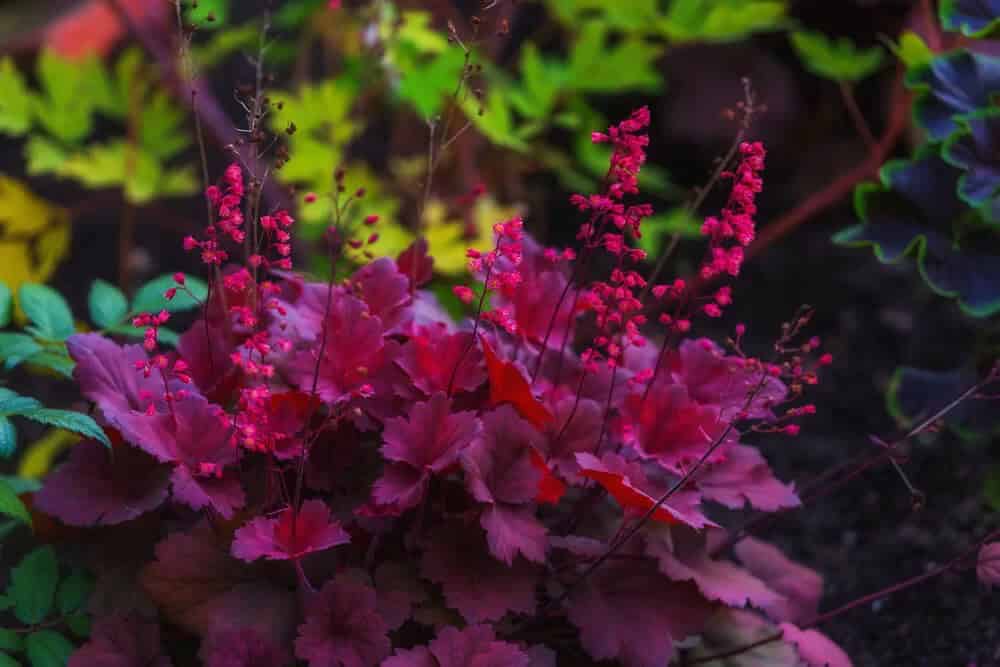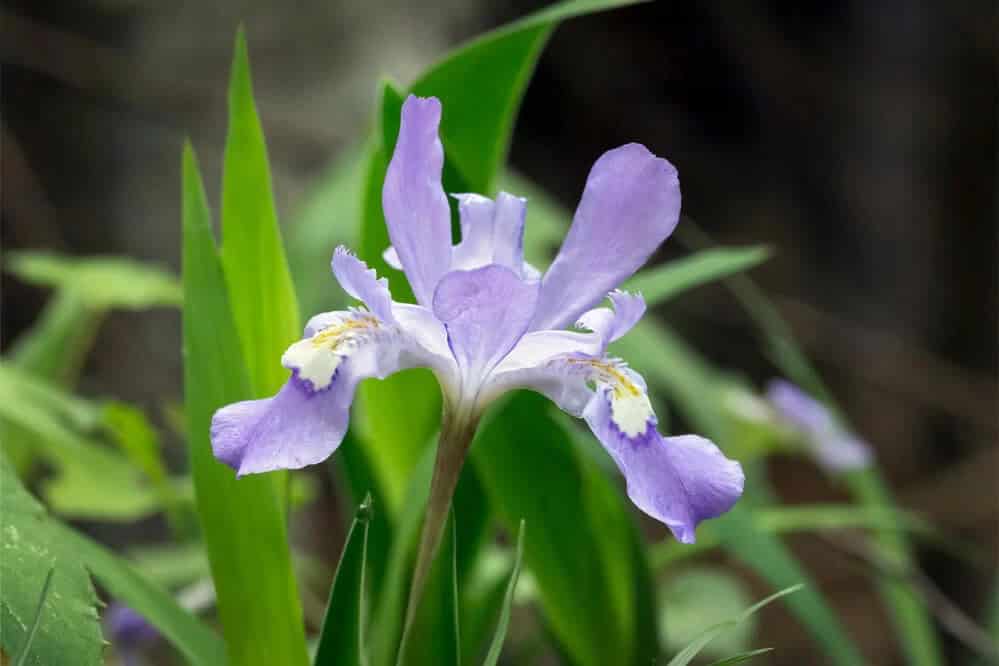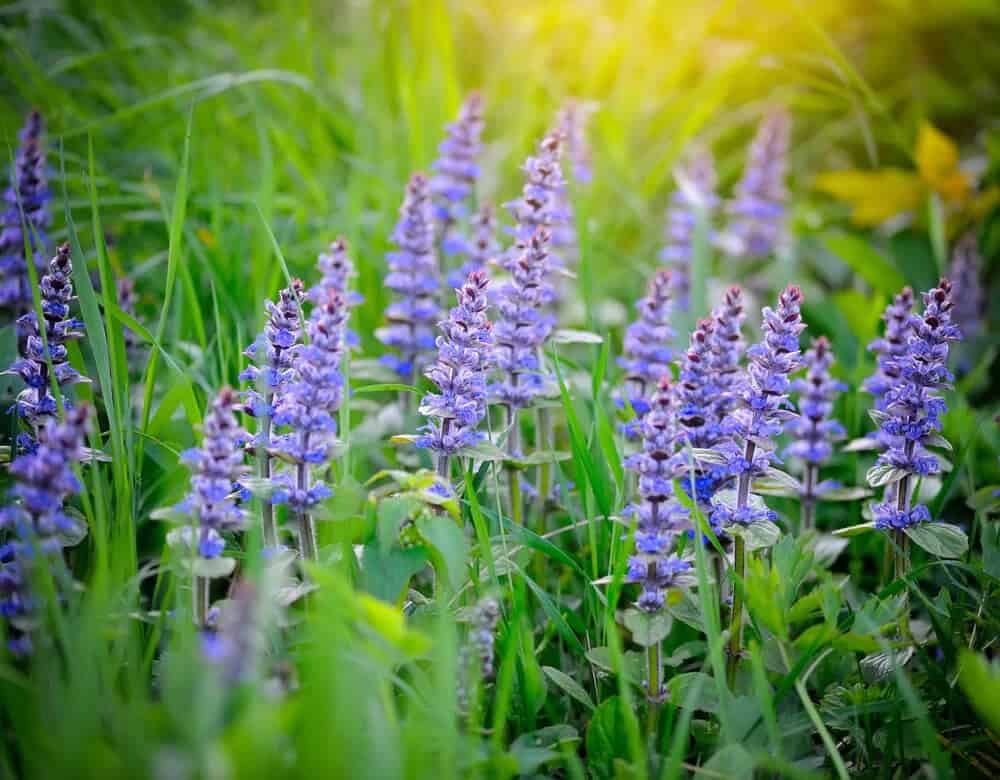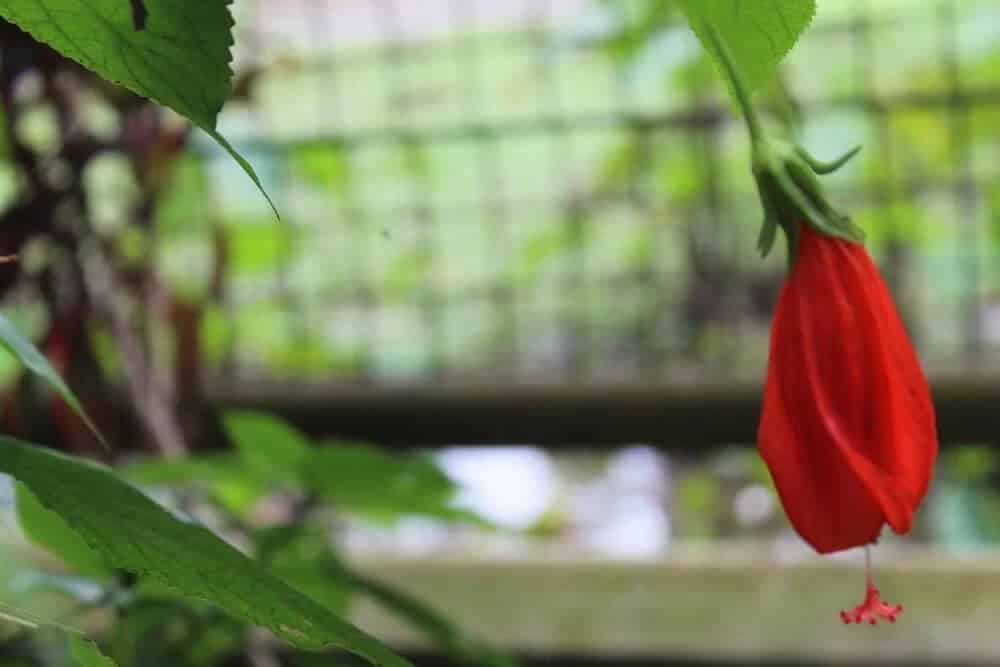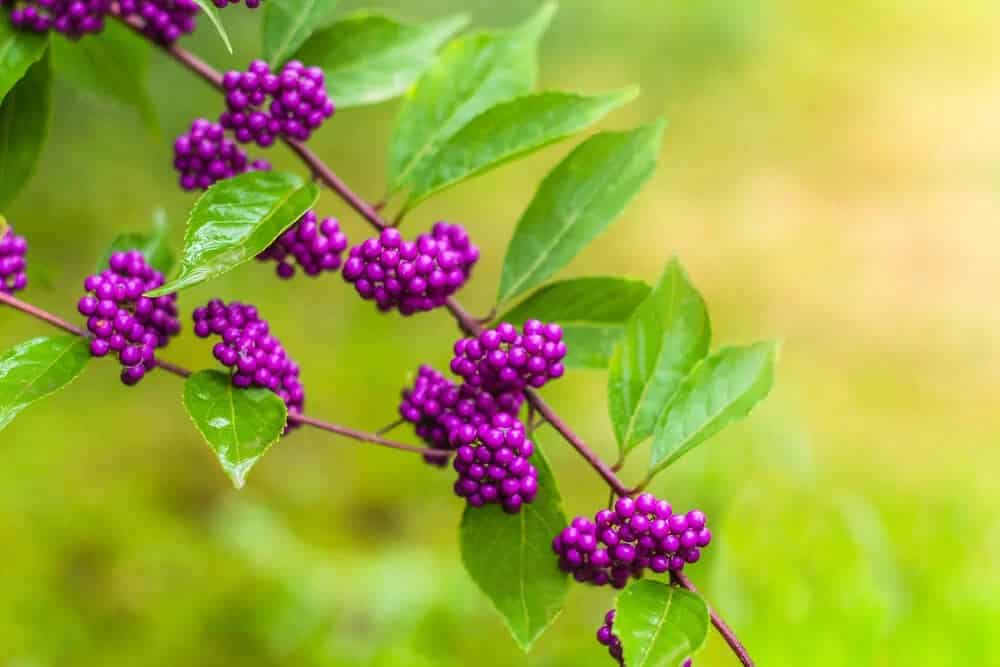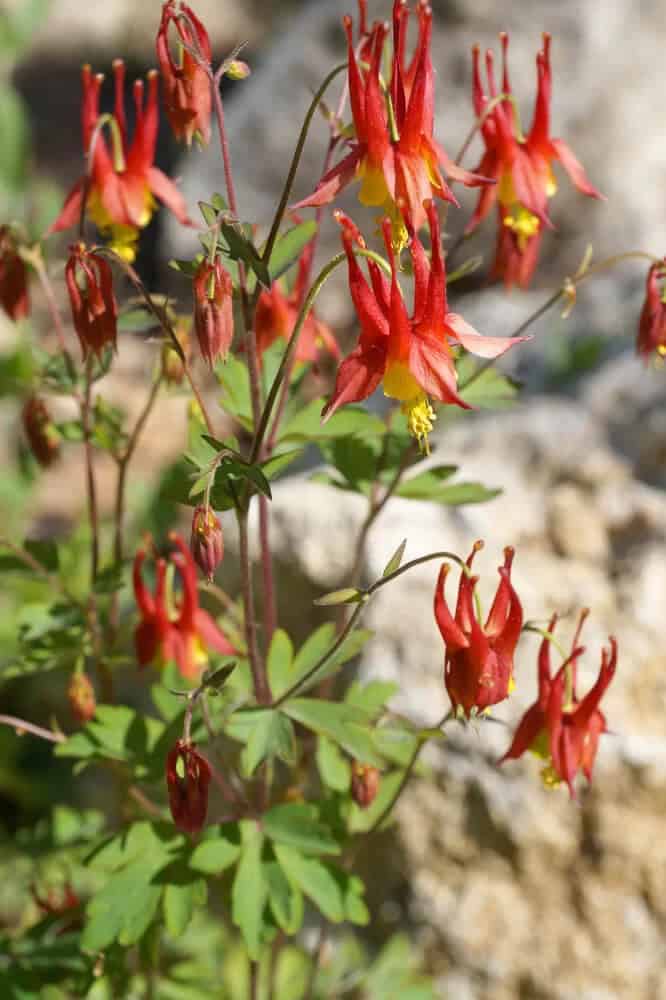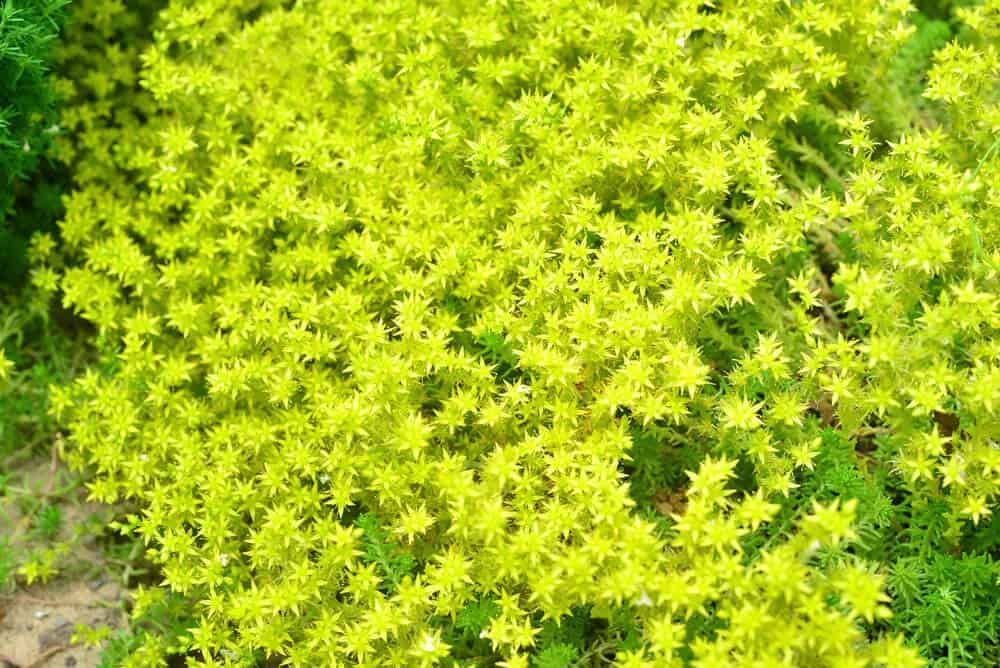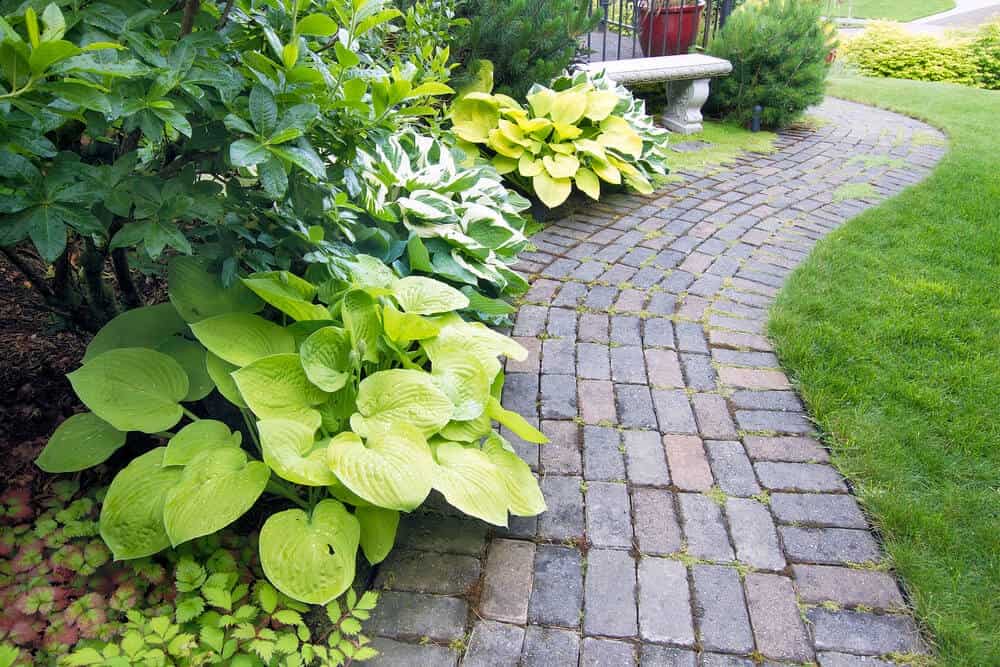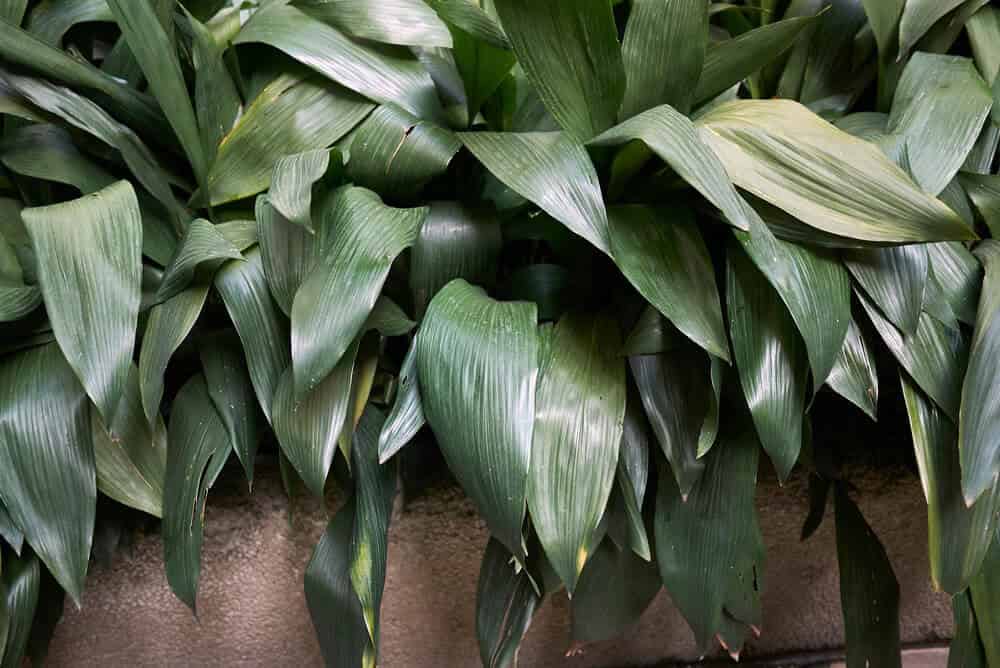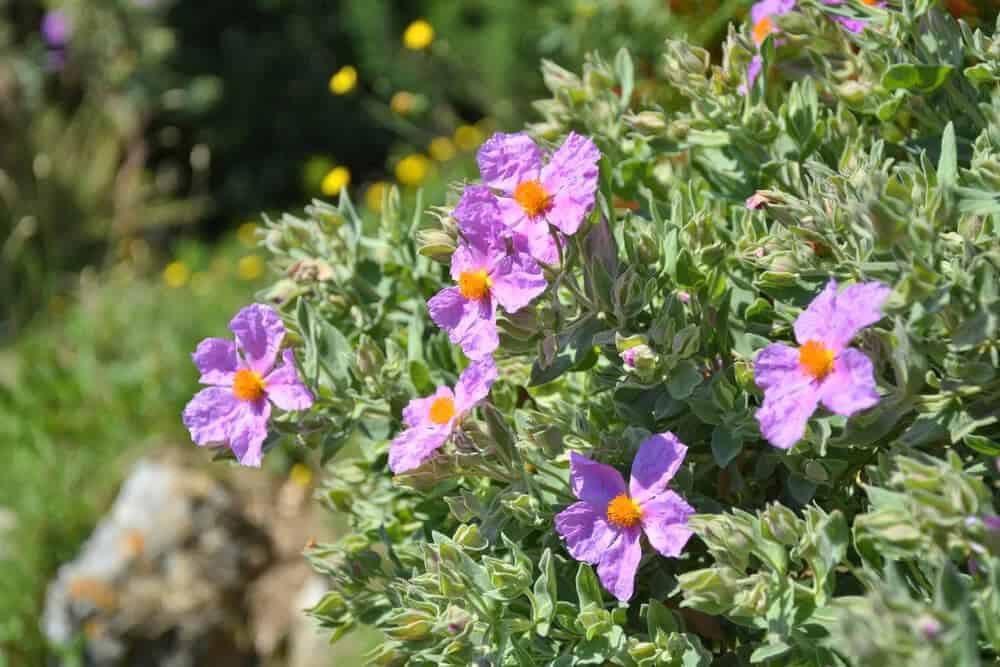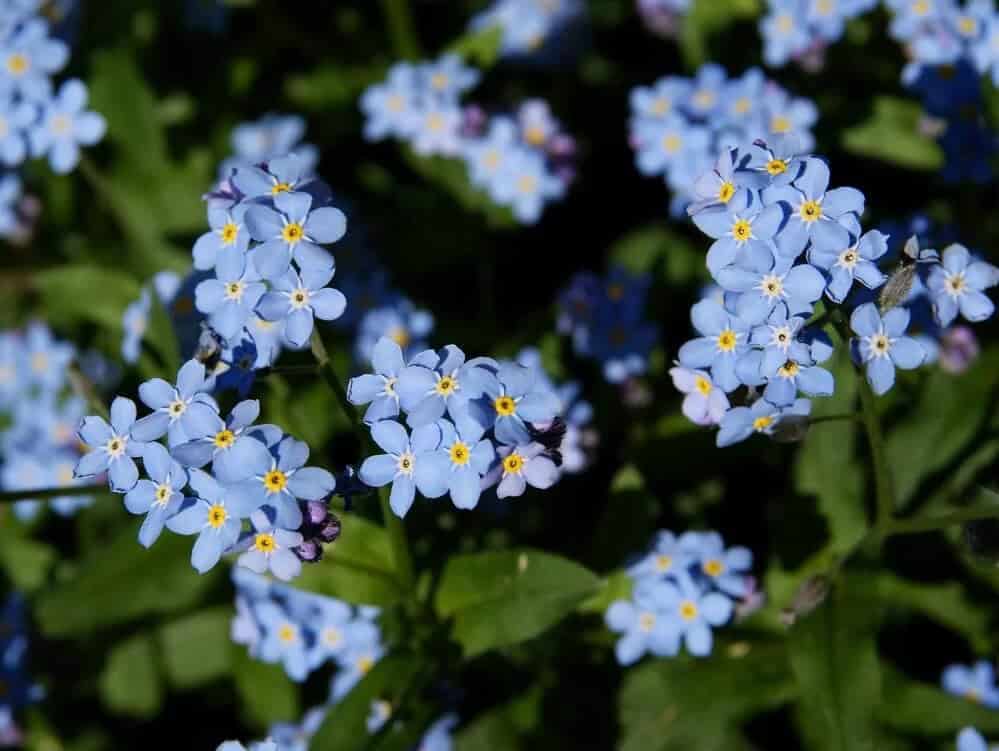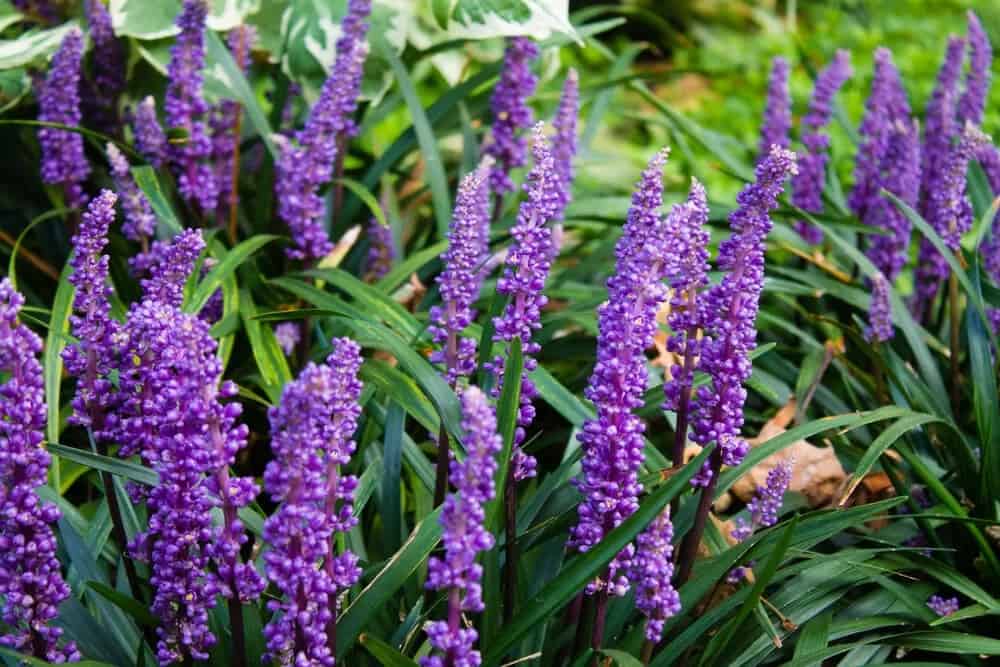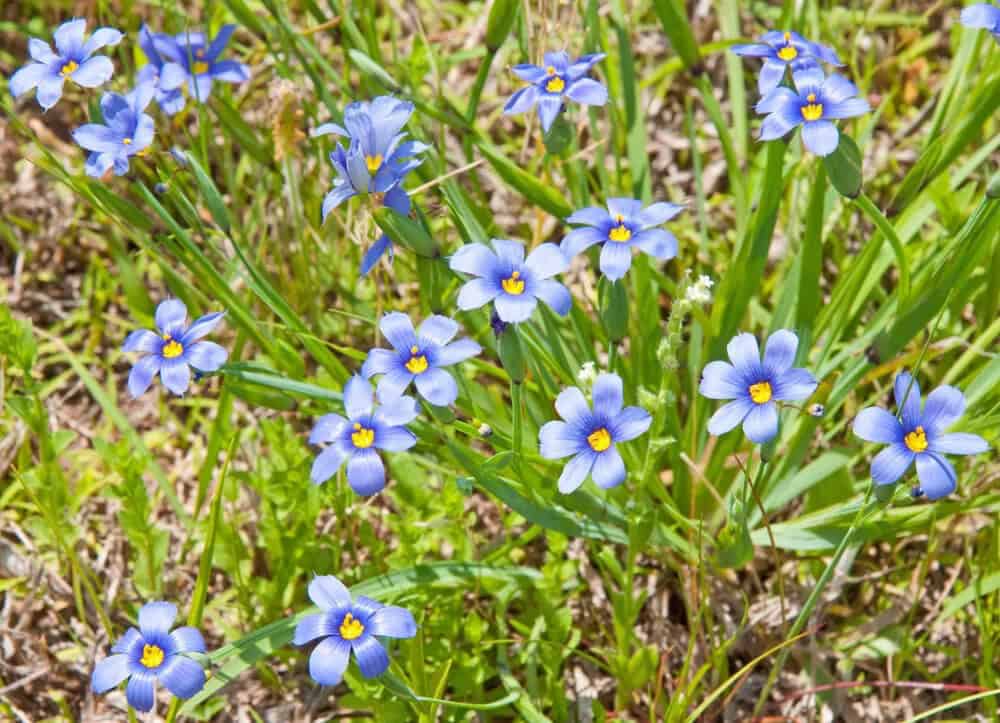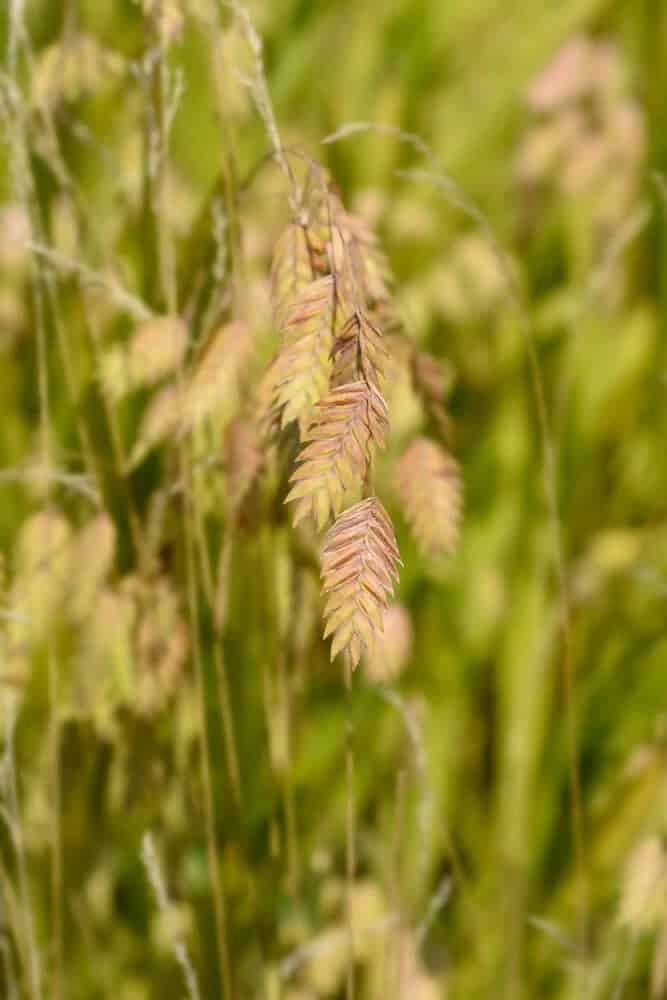Despite being some of our most iconic native trees, oaks (Quercus spp.) can be challenging to pair with ornamental plants due to their unique growing conditions. The key to success lies in embracing the concept of ‘dry shade’. Oak roots often grow close to the surface, competing for water and space with other plants while simultaneously casting them in deep shade. This combination presents a hurdle for gardeners, but it’s not an insurmountable challenge.
In fact, oaks thrive across the Northern Hemisphere, and wherever you find these majestic trees, you’ll discover thriving plant life beneath their canopies. With thoughtful selection of species and adherence to simple guidelines that keep the oak happy, there’s no need to consider the area beneath its dripline as a permanent barrier for planting.
By choosing from a diverse range of options, including groundcovers and shrubs, gardeners can find beautiful and region-specific solutions to integrate their oak tree into the broader landscape.
Key Takeaways:
When it comes to coexisting with oaks, selecting the right plants is crucial. The shallow root systems of these trees compete for resources like water, nutrients, and space with ornamental species. As a result, the soil beneath oak trees often experiences an unusual combination of dryness and shade, which many native plants have adapted to thrive in.
Choosing plants that are native to your region is a smart way to ensure success, as they’re well-suited to the local climate and soil conditions. If you prefer non-native species, focus on those that tolerate dry conditions and can withstand some drought. However, be aware that over-irrigation around oaks can lead to root rot.
Regardless of your plant selection, remember to prioritize the needs of the oak when planting.
Avoid overcrowding and keep a safe distance – at least ten feet – from the trunk to minimize competition between trees and understory plants.
20 Oak-Friendly Ornamentals for Every Garden
Coral Bells (Heuchera)
Coral bells are an absolute must-have when it comes to oak-friendly plants. Not only do they tolerate growing beneath the dripline of these majestic trees, but they truly thrive in this environment. In fact, this is where you’ll often find coral bells in their natural habitat – dry, open woods across the American Southwest, spanning from California to New Mexico. One look at their dainty, bell-shaped flowers and you’ll understand why they’re so named.
But it’s not just their delicate blooms that set them apart; their maple-like leaves are a sight to behold, ranging in hue from vibrant green to a deep, almost black purple. And the best part? As these plants mature, you can easily divide them to create new ones, making them an ideal addition to any garden.
Crested Iris (Iris cristata)
While many iris varieties struggle to thrive in the shade of oak trees, crested iris stands out as an exception. Native to open woods throughout the eastern US, this type of iris has adapted to deep shade and can form an attractive ground cover that bursts with baby-blue or lavender blooms each spring. In rich, moist soils, crested iris can spread quickly, but it finds a natural check on its growth in the dry shade found beneath oak trees.
This makes it an ideal choice for planting beneath oaks, as it won’t compete with the root systems of the oak trees and will still produce beautiful blooms.
Creeping Sage (Salvia sonomensis)
Creeping sage, a species of sage that is native to California, stands out from its counterparts due to its exceptional drought tolerance and unique ability to spread horizontally. While many woodland plants thrive in deep shade, creeping sage can even tolerate dry, rocky conditions common in the inland and southern regions of the state. Its remarkable adaptability makes it an ideal choice for areas with poor soil quality or intense sunlight.
As its name suggests, creeping sage has a tendency to spread rapidly, forming large patches up to 15 feet wide without growing taller than about a foot high. This low-growing habit makes it an excellent option for covering problem spots where other plants struggle to thrive.
Turk’s Cap (Malvaviscus arboreus)
In Texas’s dry post oak woods, Turk’s cap is an understory gem waiting to be discovered. This versatile plant has been quietly thriving for years, but its ornamental potential is only just beginning to shine. When you gaze upon a lush patch of Turk’s cap, it’s hard not to wonder why it took so long to gain recognition.
This underrated native excels at filling the space between perennials and shrubs.
Its impressive foliage is a sight to behold, and during the summer heat, it bursts forth with an abundance of small yet captivating flowers. These tiny blooms attract butterflies, hummingbirds, and even human admirers alike!
What sets Turk’s cap apart is its ability to thrive in the shade of a sprawling oak tree. As a hardy and adaptable plant, it’s a natural fit for any garden seeking a low-maintenance yet high-impact addition.
American Beautyberry (Callicarpa americana)
Native to the southeastern United States, American beautyberry thrives in the shade of oak trees – no wonder it’s considered a superstar in native gardens! Its vibrant green foliage and stunning purple berries are a sight to behold. As an added bonus, these berries attract the right kind of wildlife. When incorporating beautyberry into your landscape design, take care to avoid disturbing the surrounding oak tree’s root system by using smaller specimens.
This will not only minimize digging but also ensure a smoother establishment process for the beautyberries themselves. Although they may require some extra watering during their early stages, these shrubs are surprisingly drought-tolerant once established.
Columbine (Aquilegia canadensis)
Columbines are renowned for their striking, one-of-a-kind flowers, which showcase a diverse range of colors depending on the specific species. The most common native columbine (Aquilegia canadensis) boasts vibrant red and yellow blooms that emerge in early spring, attracting a variety of admirers including hummingbirds and butterflies. Even after the flowers have faded, their distinctive foliage provides an attractive, albeit somewhat sparse, ground cover.
Despite the numerous species, varieties, and hybrids available, native columbines should be your top choice when gardening around oaks, as they’re uniquely adapted to such environments. As a result, natives tend to bloom longer and thrive more resiliently than non-native species – a significant advantage in unique habitats like oak shade.
Stonecrop (Sedum)
Stonecrop’s extraordinary ability to thrive in dry conditions makes it a standout choice for rock gardens. This adaptable succulent can establish itself via cloning, allowing you to easily propagate new plants by breaking off pieces of existing ones. In ideal conditions, stonecrop can create a unique, moss-like ground cover that’s remarkably resilient. However, with over 300 species to choose from, selecting the right one is crucial.
Most stonecrops are full-sun plants and will not perform optimally in shady areas. If you’re looking for a shade-tolerant option, consider varieties adapted to woodland environments like moss stonecrop (S. acre) or ‘Hopewell.’ Keep in mind that while some species may tolerate partial shade, their tolerance decreases with temperature, and in regions with harsh winters, they require full sun regardless of the specific species.
Bracken Ferns (Pteridium aquilinum)
While bracken may thrive on every continent except Antarctica, its adaptability doesn’t guarantee success in every garden. In fact, this hardy fern does best in part shade rather than deep shade, making it less suitable for gardens with dense canopies. However, a bit of shade can also help keep its wandering growth in check, as bracken has a tendency to spread.
It’s worth noting that bracken is toxic, so it’s not the best choice for families with young children, horses, or pets that like to get curious and explore their surroundings.
Evening Primrose (Oenothera)
Evening primroses have won hearts globally with their stunning blooms, which can last for six months or more, depending on the species. Their hardiness has also made them a popular choice among gardeners. When planting under oaks, it’s best to opt for species native to the Southwest, as they are better adapted to the dry conditions.
Showy evening primrose, a Texas native, is an excellent option as it produces attractive, self-seeding ground cover and its flowers remain open during the day, unlike many other species that only bloom in the evening. Berlandier’s sundrops and common evening primroses are also great choices for adding some charm to your garden.
Bugleweed (Ajuga reptans)
Bugleweed is renowned for its exceptional performance in shade gardens, boasting impressive ground cover and vibrant flowers with minimal upkeep requirements. Its dependability and low-maintenance nature make it an ideal choice for busy gardeners or those new to gardening. Even in the deepest shade, bugleweed thrives without complaint.
However, it’s crucial to acknowledge that this versatile plant has a tendency to spread enthusiastically, often requiring more effort to contain than initially anticipated. As such, it’s essential to monitor its growth and be prepared to address any over-enthusiastic tendencies. While this characteristic shouldn’t necessarily deter gardeners from incorporating bugleweed into their landscaping, it’s vital to consider the potential for it to take on a life of its own if left unchecked.
Plantain Lily (Hosta)
In Japan and eastern Asia, plaintain lilies – also known as hostas – inhabit open woodlands and forest edges. What’s fascinating is that they’re more closely related to agaves and yuccas than plantains or lilies. The ‘lily’ part of their name comes from their showy blooms, while the ‘plantain’ part references their lush, heart-shaped foliage that bears a striking resemblance to common plantain leaves.
Despite their different associations, hostas are prized by gardeners for their resilience and ability to thrive in shaded environments. In fact, these plants often rely on the protection of larger trees, like oaks, which provide essential shelter from the scorching summer sun. Oaks also offer a valuable service as ‘nursery trees’ due to their persistent leaf litter.
Come winter, this natural insulation safeguards hosta roots from harsh freezes; in spring and summer, it repels snails and slugs, notorious garden pests.
Cast Iron Plant (Aspidistra eliator)
With its rugged reputation, Aspidistra has earned the nickname ‘cast iron’ for its extraordinary ability to thrive in challenging conditions. This stalwart plant is renowned for tolerating deep shade, drought, and even neglect, making it an ideal substitute for hostas. Under the dappled shade of oak trees or in other areas with limited sunlight, cast iron plants will flourish. Additionally, their hardiness has led to another moniker: ‘barroom plant’.
This name is attributed to its ability to grow in conditions that would be inhospitable to most plants. As if this weren’t enough, cast iron plants are also naturally resistant to pests and diseases, requiring minimal upkeep. If you’re seeking a low-maintenance option for a border, ground cover, or standalone specimen, the cast iron plant is definitely worth considering.
Rock Rose (Pavonia lasiopetala)
Forget-me-nots (Myosotis sylvaticus)
Forget-me-nots exhibit adaptability based on geographical location. In southern regions, they thrive in afternoon shade during summer months and can live for at least two years. Conversely, northern locations require more direct sunlight, but the plants typically die back each winter. Despite these differences, forget-me-nots are prolific self-seeders, making it unnecessary to purchase additional plants. Their delicate flowers and deep green foliage create a stunning contrast.
While they may not be ideal for deep shade, forget-me-nots can make a charming groundcover near tree drip lines. However, ensure they’re confined to sunny areas, as under optimal conditions, they can become quite invasive and potentially escape cultivation. In regions where climate constraints regulate their spread, forget-me-nots can add a lovely touch to shade gardens.
Periwinkle (Vinca minor)
Periwinkles have been a cornerstone of gardens for centuries, boasting a unique combination of features that makes them an attractive choice. Their ability to form a dense, lush ground cover with deep green foliage is impressive, and their capacity to thrive in dry conditions only adds to their appeal. This versatility has earned periwinkles a special place in oak-shaded areas, where they can flourish without excessive watering.
While periwinkles’ spreading habits can be beneficial for creating a blanket of color, they can also become too enthusiastic. In some regions, these plants are considered invasive, as they tend to overtake native ecosystems. Before introducing any new plant into your garden, it’s essential to research its potential impact on local flora. Even if periwinkles aren’t listed as invasive in your area, it’s crucial to ensure that they won’t overwhelm other plants and become a nuisance.
Oakleaf Hydrangea (Hydrangea quercifolia)
In the woodland habitats of eastern United States, oakleaf hydrangea has thrived in harmony with its namesake trees, red and white oaks. The plant’s striking foliage is undeniably a major draw, but its lush sprays of white blossoms are what truly set it apart. These delicate flowers are a refreshing respite from the summer sun, providing solace for weary eyes. While oakleaf hydrangea excels in warm climates, its vulnerability to frost damage must be considered.
In regions with harsh winters, reduced flower production can occur when temperatures drop significantly below freezing. To preserve next year’s blooms, it is essential to protect your plants by wrapping or shielding them from the cold.
Monkey Grass (Liriope muscari)
Blue-eyed Grass (Sisyrinchium bellum & S. angustifolium)
While not technically a grass, blue-eyed grass shares some similarities with its monocot relatives like irises, grasses, and lilies. Its slender leaves resemble those of grasses, despite the lack of petals characteristic of true flowers. With numerous species native to North America, it’s understandable that one blue-eyed grass may seem very much like another – around shoe height, featuring sparse foliage and tiny blooms reminiscent of miniature crocuses.
Given this uniformity, selecting a variety well-suited for your oak tree’s shade is crucial. Western blue-eyed grass stands out as an excellent choice, tolerating both drought and shade with ease; Bermuda blue-eyed grass (S. angustifolium) while slightly thirstier on average, is more readily available in nurseries and can thrive in many locations. Both species propagate rapidly via rhizomes, creating a lush carpet of growth that reliably awakens to vibrant blue hues each spring.
Azaleas (Rhododendron)
Azaleas are a popular choice for gardens due to their refined beauty, but they also possess qualities that make them particularly well-suited for planting under oak trees. Specifically, they thrive in shaded environments and can tolerate fast-draining soil with moderate water availability. Their shallow root systems also enable them to flourish without competing intensely with the surrounding oaks.
Furthermore, azaleas showcase remarkable diversity, boasting numerous native species and varieties across North America.
While azaleas grow relatively slowly, they do require a reasonable amount of water as they mature. It’s essential to plant them judiciously, at least several feet from the oak tree’s drip line, to prevent intense competition that may leave them vulnerable to disease.
Inland Sea Oats (Chasmanthium latifolium)
While we’ve been highlighting various options for your garden, one crucial recommendation has been missing – a suitable grass choice. Unfortunately, turf grass isn’t compatible with oaks, as it requires full sun to thrive and doesn’t persist in shaded conditions. However, native bunch grasses offer an attractive alternative that can tolerate deep shade and add beauty to your landscape. Among the most striking options are inland sea oats, which feature elegant clumps reminiscent of bamboo.
But what truly sets them apart is their inflorescences, which emerge in early summer as lime-green drooping stems that eventually turn a rich coppery brown by late summer. If you’re determined to incorporate grass into your oak plantings, inland sea oats are an excellent choice.
20 Plants for an Oak-Friendly Garden
Frequently Asked Questions About Plants for an Oak-Friendly Garden
What plants grow under oak trees in California?
While California may not be representative of the country as a whole, its unique geography and isolation from the rest of the nation have contributed to its distinctiveness. The state’s varied landscape, flanked by two mountain ranges, is home to an array of flora, many of which are endorsed by the California Oaks Foundation. Among these recommendations are stonecrop, blue-eyed grass, coral bells, and cast-iron plant, all of which can thrive in the Golden State’s diverse environments.
Are there any plants that grow under oaks in Texas?
Texas’s oak woods showcase an astonishing variety of environments, from arid canyons to lush swamps. Your personal favorites will largely depend on your location along this spectrum. As a general rule, native plants are excellent choices, such as rock rose and Turk’s cap for dry soils, and American beautyberry and columbine for wetter areas.
It’s essential to note that most of Texas has neutral-to-alkaline soil, which can be challenging for many ornamental species.
However, you can always grow more finicky plants in containers, which also allows you to minimize the disturbance of sensitive oak roots while digging.
Which plants grow under oaks in Florida?
Florida’s unique soil characteristics present both opportunities and challenges for gardeners. On one hand, the acidic nature of the soils is beneficial for many plant species. However, the slow drainage can be a concern. Interestingly, the presence of healthy oak trees on your property is a good sign, particularly if they are live oaks or turkey oaks. These trees thrive in well-draining soils, which suggests that your property may have suitable conditions for gardening.
While mucky soils can be a nuisance, Florida’s mild and wet climate provides an ideal environment for many plants. This allows gardeners to choose from a wide variety of plant species that can thrive under the shade of Florida oaks. In fact, irises, Turk’s cap, oakleaf hydrangeas, and hostas are just a few examples of plants that will do well in these conditions.
